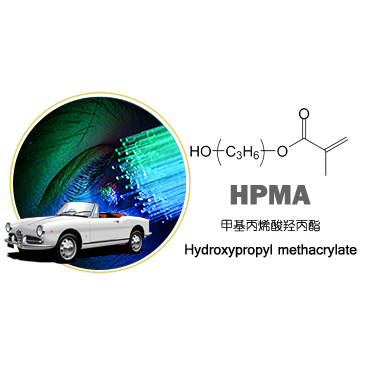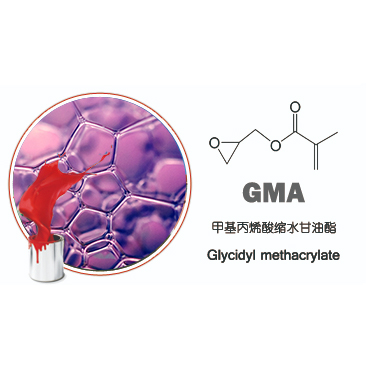- E-mail : info_marketing@jindunchemical.cn
- Phone : +86 21 64057580
- Address : Shanghai China
Azithromycin is not used right, beware of death!
Azithromycin is a commonly used antibacterial drug in respiratory medicine,
which only needs to be given once a day, does not require skin testing before
administration and is effective against Mycoplasma pneumoniae, etc. It is used
more frequently in respiratory tract infections, and irrational use of
azithromycin is common, and tragedies happen from time to time! Today to run
through those things of azithromycin!
One
How to play antibacterial effect
Azithromycin is a macrolide antibiotic with a 15-membered ring, which acts
by binding to the subunit of the 50S ribosome of sensitive bacteria, thereby
interfering with their protein synthesis (without affecting the synthesis of
nucleic acids). It has good antibacterial activity against Haemophilus
influenzae, Legionella pneumophila and Mycoplasma, and is also effective against
Streptococcus and Pseudomonas aeruginosa infections, and is of therapeutic
importance for nontuberculous mycobacteria, especially the Mycobacterium avium
intracellulare complex group [1].
II
When to choose this drug
(1) Mycoplasma pneumonia: the resistance rate of Mycoplasma pneumoniae to azithromycin in China is 54.9%-60.4%, when mycoplasma pneumonia is suspected,
azithromycin is no longer the first choice, and tetracyclines (doxycycline,
minocycline) and fluoroquinolones (levofloxacin, moxifloxacin) are preferred in
adults [2]. Oral or intravenous azithromycin can be considered in children
[3].
(2) Haemophilus influenzae: this organism has been more than 30% resistant
to azithromycin. Amoxicillin/clavulanic acid, ampicillin/sulbactam are preferred
for the treatment of Haemophilus influenzae, and cefuroxime or azithromycin can
be used when resistant to ampicillin [2].
(3) Simple chronic obstructive pulmonary disease: Haemophilus influenzae,
Streptococcus pneumoniae, and Catamorium are predominant in patients with simple
chronic obstructive pulmonary disease, when anti-infection can be treated with
macrolides (azithromycin, clarithromycin), first- or second-generation
cephalosporins (e.g., cefuroxime), etc. [4].
(4) Drug management in the stable phase of chronic obstructive pulmonary
disease: studies have shown that long-term application of azithromycin and
erythromycin can reduce the frequency of acute exacerbations in some patients
with chronic obstructive pulmonary disease. However, long-term use of
azithromycin may increase bacterial resistance, and therefore long-term use is
not recommended unless it is really necessary. During exacerbations, the use of
antibiotics can be limited by observing sputum color and referring to C-reactive
protein and calcitoninogen levels [5].
iii
When is it more appropriate to take
When to take azithromycin really feels like a mystery, checking the
instructions of different manufacturers and dosage forms, the conclusion may be
different, some labeled 1 h before or 2 h after meal, some labeled can be taken
with food. In order to find out, by reviewing the information, we came up with
the following [6].
(1) According to the drug instructions: most domestic azithromycin requires
to be taken 1 h before or 2 h after meals, while imported azithromycin tablets
and dry suspensions can be taken with food.
(2) Whether the bioavailability of azithromycin is affected by food is
related to the drug dosage form. Food will reduce the absorption of capsules,
which should be taken 1 h before or 2 h after meal; tablets and dry suspension
can be taken with food.
IV
The speed of drug administration needs attention
The speed of intravenous drip has also been questioned why it takes 3 h
when the drug concentration is 1 mg/mL and 1 h when the drug concentration is 2
mg/mL. It takes a shorter time when the concentration is high. The possible
reasons for this after reviewing the relevant literature are as follows [7].
1, the bound drug and free drug are in dynamic equilibrium, and only the
free drug can exert pharmacological activity. When azithromycin is dispensed at
low concentration (1 mg/mL), the binding rate to plasma proteins is high, and at
this time, the drip rate is slowed down so that in order to allow more
azithromycin to be free and distributed to the tissues to exert pharmacological
activity.
2, the same dose of azithromycin, with 1 mg/mL relative to 2 mg/mL need
more solvents, in order to reduce the burden on the heart and the occurrence of
acute pulmonary edema, so the amount of solvents need to slow down the drip
rate.
3. If the drip is too fast, the drug concentration in the plasma will rise
rapidly within a short period of time, leading to an increase in the content of
gastrin in the blood, which may cause nausea, vomiting and abdominal pain.
For the above reasons, relatively low concentration (1 mg/mL), 3 h is
needed for the sedative drip.
V
Dosing regimen
The duration of treatment needs to be considered in terms of the
pharmacokinetics of the drug and the post-antimicrobial effect on the one hand,
and the patient's own disease on the other.
(1) Pharmacokinetics: The terminal elimination half-life of azithromycin in
human tissues is up to 68 h. Azithromycin can still be detected in macrophages
and leukocytes on the 12th day after dosing. The level of azithromycin in
tissues and cells can be much higher than the blood concentration of the same
period by 10-100 times, and the level of azithromycin in infected sites is 6
times higher than that in non-infected sites, especially in lung tissues with
high levels and long-lasting effects. After 3 days of administration,
azithromycin continues to act in the body for 3-4 days even after
discontinuation of the drug.
(2) Antibacterial after-effect: The so-called antibacterial after-effect
means that after stopping the antibacterial drug, the blood concentration of the
drug even if it is lower than the minimum inhibitory concentration (MIC), and
the bacteria are still in the inhibited state for a certain period of time and
cannot grow. Although it appears from the surface that azithromycin is stopped
after 3 days of application, in fact, the pathogen remains in an inhibited state
after discontinuation [8].
For these reasons, it is usually used for 3 days and stopped for 4 days,
and then the decision to continue is based on temperature, the presence of
complications, and the improvement of cough symptoms.
VI
Common adverse reactions and countermeasures
(1) Gastrointestinal adverse reactions: generally there are more
gastrointestinal adverse reactions with intravenous drip compared with oral
drip. To reduce vomiting and abdominal pain caused by this drug, slow down the
drip rate or give 3 g of montelukast with 50 mL of warm water 10 minutes before
dosing [7].
(2) Abnormal liver function: because the hepatobiliary system is the main
route of azithromycin excretion, it should be used with caution in patients with
hepatic insufficiency and should not be used in patients with severe liver
disease, cholestatic jaundice, or elevated serum aminotransferase. If it must be
used, regular follow-up of liver function is required during the drug
administration.
VII
Interactions[9]
(1) Azithromycin may elevate blood levels of digoxin, colchicine,
terfenadine, cyclosporine, and phenytoin concentration; monitor closely for
adverse effects.
(2) Ergotamine or dihydroergotamine: acute ergotism, manifested by severe
peripheral vasospasm and sensory dullness.
(3) Nelfinavir can increase serum concentrations of azithromycin. Although
no dose adjustment of azithromycin is required in combination with nelfinavir,
known adverse effects of azithromycin such as liver enzyme abnormalities and
hearing impairment must be monitored closely.
(4) Care should be taken to test prothrombin time when combined with
warfarin.
VIII
Precautions[9]
(1) Lactating women: Macrolides are weakly basic and can not only cross the
placental barrier but are also easily secreted into breast milk. Breastfeeding
is suspended during the period of administration (generally 3 days for
infections) and for 7 days after discontinuation of the drug.
(2) Before using azithromycin, be sure to ask the patient in detail whether
there is a history of arrhythmia and QT interval prolongation, as the
consequences of a missed diagnosis can be fatal. In a previous report, a patient
with congenital heart disease lost her life due to QT interval prolongation
caused by misuse of azithromycin.
(3) For patients with electrolyte disorders, it is recommended to correct
electrolytes and review ECG before use, and consider whether to use the drug if
there is no abnormality.
(4) Use with caution in patients with myasthenia gravis: Cases of worsening
myasthenia gravis and new onset myasthenic syndrome have been reported in
patients treated with azithromycin.
-
date
2022-10-10
-
location
Shanghai, China













































